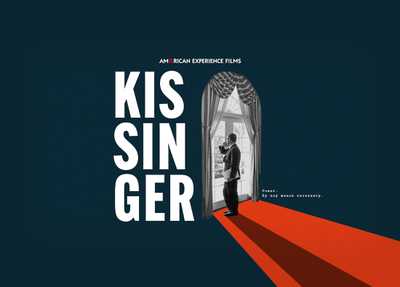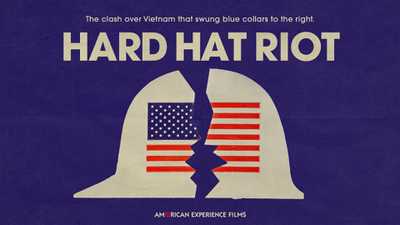When Smog Turned Deadly - History's Most Dangerous Smog Events
From coal-fired cities to industrial river valleys, a smokey fog crept in quietly and left behind chaos: schools shut down, people collapsed in the streets, and entire towns were brought to a standstill. Before anyone understood what was happening, the damage was already done. What caused these eerie, suffocating events—and why did they happen in some places, but not others?
Long before "air quality" became a data point in our weather apps, smog was a terrifying mystery, rolling into cities like a silent killer. These weren’t just foggy days; they were public health disasters. Some smog events shut down entire cities. Others triggered revolutions in science, policy, and activism. Here’s a look at some of the most dangerous smog events in history.

Donora, Pennsylvania (1948)
In 1948, the industrial town of Donora—home to the American Steel and Wire Plant and the Donora Zinc Works—regularly dealt with a hazy sky. But on October 29, the thick fog that settled over the town felt different. While the local Halloween parade still went on, as well as the Donora Dragon’s football game, visibility began to deteriorate rapidly and local doctors started receiving an unusually high number of calls. By the next day, doctors urged residents to evacuate but it was too late. The fog was too thick. Emergency vehicles could only navigate with someone walking ahead, using a flashlight. The first death was reported by 2 a.m. on October 30; by midday, the toll had climbed to 17. In total, 20 people died, and more than 5,900—43% of the town’s population—were sickened by the smog.

A team of 25 investigators found three key causes: pollution from the riverfront mills, a cold airfront, and a lack of wind. Together, these factors created a temperature inversion that trapped pollutants in the valley and created the deadly smog event. The tragedy at Donora led to the first major U.S. public health inquiry into an environmental disaster.

London, England (1952)
It’s December 1952, and a thick, choking smog blankets London for five straight days. News outlets compared it to the Donora tragedy, warning of “smothering fogs containing acid fumes from industrial plants.” With temperatures plummeting, Londoners burned more coal than usual—much of it low-grade, sulfur-rich fuel. The result was catastrophic. Visibility dropped so low in some areas that pedestrians couldn’t see their own feet.

Major sporting events were canceled, ships were stuck on the Thames, cattle died in droves, and public transportation came to a standstill. The event, later known as The Great Smog, is believed to have caused between 4,000 and 12,000 deaths and left many more with chronic respiratory illness. The tragedy led directly to the Clean Air Act of 1956—a landmark moment in Britain’s environmental history.
Meuse River Valley, Belgium (1930)
On December 3, 1930, along a 12-mile stretch of the Meuse River Valley, residents began experiencing alarming symptoms—hoarseness, chest pain, coughing, nausea, vomiting, and even foaming at the mouth. The culprit? A heavy mist that had descended over the valley. Within 24 hours, 60 people were dead.

Fears quickly spread that it could be a mustard gas attack. However, investigators determined that a combination of industrial emissions from nearby factories, there were 27 along the river, and a temperature inversion were responsible for the deadly phenomenon. The weather was also cold and windless, which kept the polluted air close to the ground. Hills surrounded the valley, worsening the effect and preventing the toxic air from dispersing.
This incident was one of the first to lead to scientific proof of the potential for atmospheric pollution to cause illness and death.
St. Louis, Missouri (1939)
On November 28, 1939—later dubbed “the day the sun didn’t shine”—St. Louis was smothered by thick, black smog. Most homes and businesses at the time burned soft coal, and the bitter cold meant that it had already been a smoky month: the weather bureau had reported eight “smoke pall” days in November alone. Some thought there was a big fire downtown with "smoke pouring westward in huge clouds."

But on Black Tuesday, the air was stagnant. And according to the St. Louis Star and Times, visibility dropped to the "vanishing point" in some areas. There were no reported deaths, but many in the city were rattled by the severity of what was then referred to as smoke and fog. Business was delayed, and the hospital reported soot gathering on the beds. The event was enough to push local officials to begin exploring cleaner energy alternatives.
New York, New York (1966)
Throughout the 1950s and '60s, New York City wrestled with chronic air quality issues. But in November 1966, things reached a breaking point. On Thanksgiving Day, the city’s air pollution index hit an all-time high, prompting the mayor to issue New York’s first-ever Stage One Air Pollution Alert.

The timing helped soften the blow: factories were shut down for the holiday, and fewer cars were on the road. Still, the city was engulfed in haze. The Macy’s Thanksgiving Day Parade went on as planned, but floats and spectators alike were shrouded in smog. Although no deaths were reported immediately, later studies estimate the event may have contributed to between 168 and 400 fatalities.

Los Angeles, California (1943)
But not all smog is the same. Unlike London or Donora, Los Angeles' smog didn’t kill thousands in days; it choked the city for decades.
In the middle of World War II, a dense, acrid cloud descended over Los Angeles, prompting fears of a chemical warfare attack by the Japanese. The hazy fog was so dense that visibility was reduced to less than three blocks, and residents flooded hospitals with reports of eye, nose, and throat irritation. Children were told not to play outside and the Los Angeles International airport was shut down.

Early investigations pointed to emissions from local rubber plants, which were working overtime to meet wartime demand, exacerbated by a windless day. The Los Angeles Times also blamed heavy traffic and unusual atmospheric pressure. Unlike more industrially driven smog events, sulfur was not a major component of L.A.’s smog. With no easy answers available, confusion and frustration gripped the city. What few could anticipate was that this early smog event would spark the beginning of groundbreaking research and transform our understanding of air pollution.
To learn more about the people who cracked the code to L.A.'s smog, how they did it, and the fallout, watch Clearing the Air: The War on Smog.








